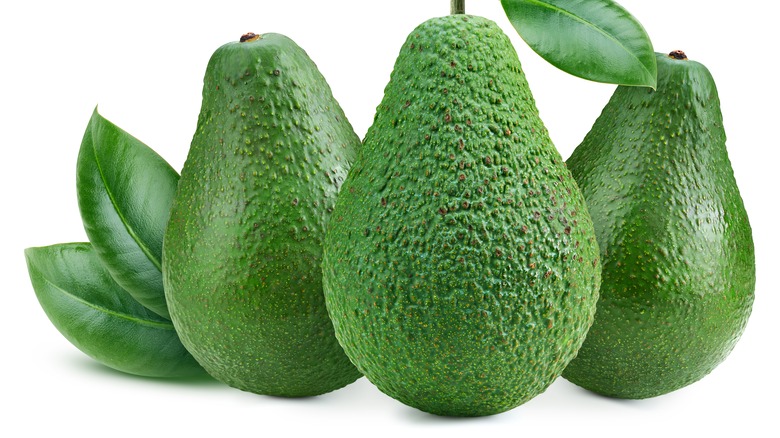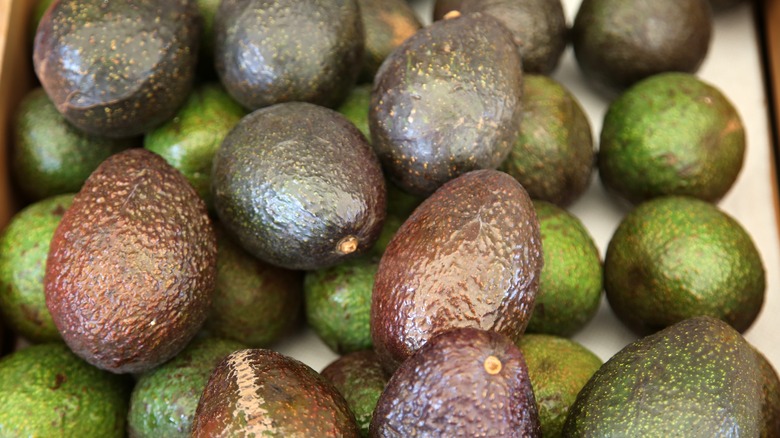What The Outside Of An Avocado Can Tell You About Its Ripeness
Americans love avocados so much that they've become a punch line for an entire generation — at least, avocado toast has. Millennials buy so much of the breakfast dish that they've even been called out by millionaires for allotting too much of their money toward avocados instead of a future home, according to CNN. And between 1985 and 2020, avocado consumption in the U.S. grew from 436 million pounds a year to a whopping 2.7 billion, reports Statista.
While avocados can be eaten in many delicious ways (mango guacamole and avocado chips anyone?), there are some things to keep in mind when preparing them. For one, be careful when cutting into their thick skins. According to Insider, 2018 saw a big increase in avocado-related injuries, with 8,900 people ending up in the ER, mostly from slicing through the tender avocados and into their hands. Once you have that down, however, you may want to slice, cube, or mash your avocado flesh. Or you could just halve it, sprinkle on some lime juice and Tajin seasoning, and dig right in with a fork!
But before you even get there, make sure to cut into your avocado at its optimal ripeness. Too green, and you'll be stabbing hard (and let's face it, useless) avocado flesh, but too ripe, and it will be brown and mushy. Luckily, all you need to do is check the outside of the fruit.
Color, texture, and firmness indicate ripeness
We know not to judge a book by its cover, but for avocados, you'll want to do exactly that. When searching for a perfectly ripe avocado, you can tell a lot from the outside. Color can be a key indicator, and it turns out darker is better, according to MasterClass. Bright green fruits generally mean the flesh inside will be hard to eat for some time. However, you shouldn't rely on color alone, as certain avocado varieties don't turn very dark.
Instead, you may want to touch the skin. Avocados From Mexico notes that unripe avocados will be smooth to the touch, while ripe fruits should have bumpy skin. MasterClass also recommends squeezing them — ripe avocados will remain firm but should still give a little. If you're testing one that feels completely mushy, it's overripe and should be set back in the pile.
Of course, it's not always possible to pick a perfectly ripe one, and who has time to feel every fruit in the grocery store bin? If you end up with a bag of unripe avocados, you have a few options. You can simply wait and let them ripen on the counter, which Epicurious says can take four to seven days. Or, if you've got a guacamole recipe that just can't wait, California Avocados suggests placing your avocados in a paper bag with an apple or kiwi to speed up the ripening process.

